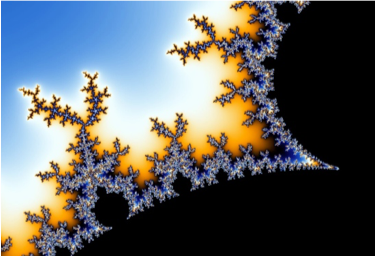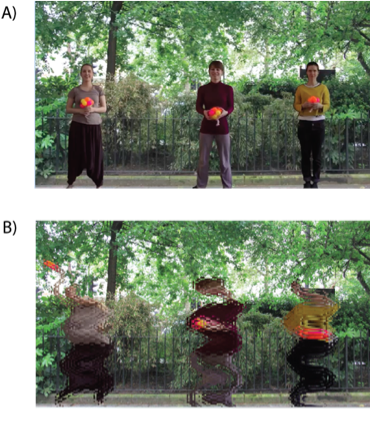Long before your baby can crawl or walk, they are learning about their world through their eyes! What your baby pays attention to depends on many interacting – and often, competing – processes. For example, sometimes infants’ attention prioritizes things that are perceptually salient, like bright lights or shiny toys. Other times, they can inhibit their attention away from perceptually salient stimuli to other things in their environment that they may choose to look at instead.

We think that overtime, babies’ visual attention becomes more self-organized and complex. One way to characterize this complexity is through fractals. Fractals are shapes that exhibit similar patterns at increasingly small scales, and appear nearly the same at different levels (Figure 1). They’re frequently found in nature, and have been used to characterize heart rates, earthquakes and mountain-ranges. We decided to see if we could characterize infants’ eye-gaze patterns using fractals.

To do this, we showed babies (ages 3-36 months) movies of ladies dancing (Figure 2a). We also showed them versions of the movies with most of the social content removed (Figure 2b). We found that the structure of infants’ eye-gaze was, in fact, fractal! Furthermore, over the first years of life, their eye-gaze structure became increasingly fractal. Notably, infants’ eye-gaze patterns were more self-organized/fractal when they were watching the movies with social content, compared to the movies with the social content removed. This suggests that infants’ attention may be more self-organized when they are more actively engaged with a stimulus, or when a stimulus is more meaningful to them

